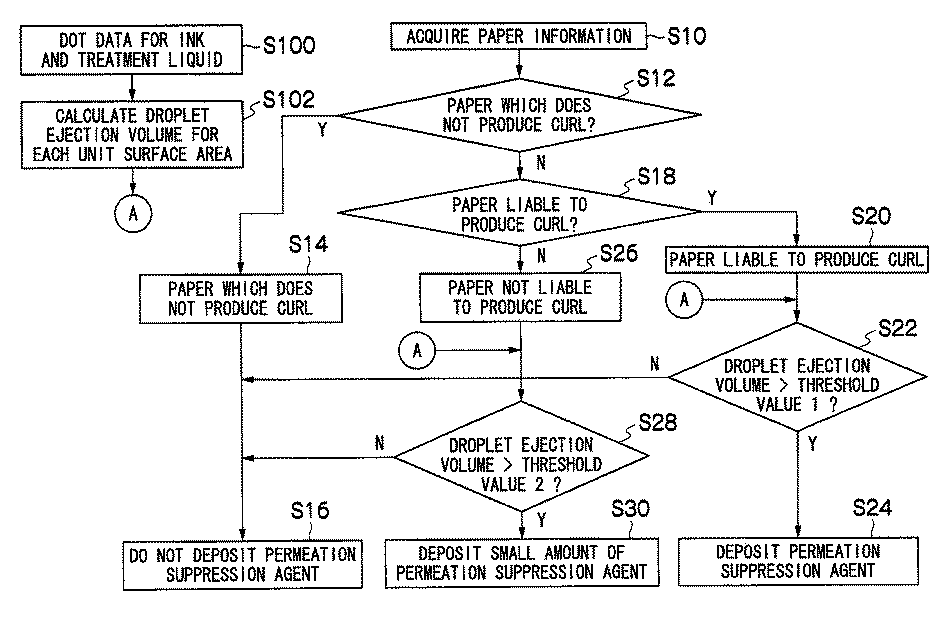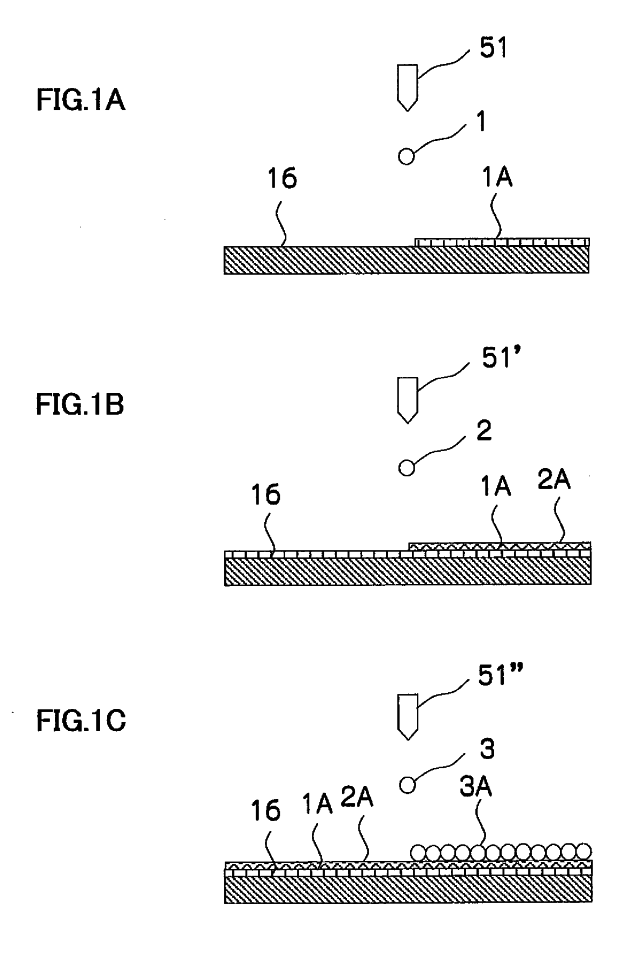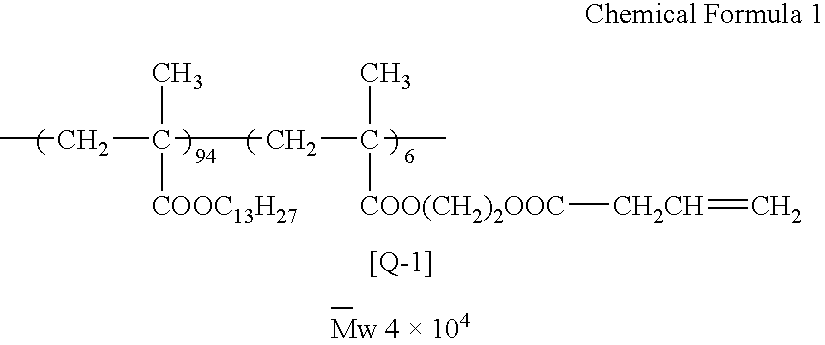Image forming method and image forming apparatus
a technology of image forming and forming method, which is applied in the direction of printing, duplicating/marking methods, etc., can solve the problems of ink repellent, no method can suppress curl to a sufficient degree, and the occurrence of paper deformation, so as to prevent curling and increase the viscosity of ink dots , the effect of preventing curling
- Summary
- Abstract
- Description
- Claims
- Application Information
AI Technical Summary
Benefits of technology
Problems solved by technology
Method used
Image
Examples
first embodiment
[0190]FIG. 13 is a flowchart showing the control of the deposition of permeation suppression agent relating to a first embodiment.
[0191]When the permeation suppression agent deposition processing is started during image recording, firstly, information about paper used in image recording (information about the type of paper) is acquired (step S10). The paper information can be acquired automatically from an IC tag (information recording medium) which is attached to the paper supply tray, or it may be input by an operator. Furthermore it is also possible to print a test print and for the operator to actually judge the state of curl.
[0192]On the other hand, in image recording, ink dot data and treatment liquid dot data are generated on the basis of the image data (step S100), and the droplet ejection volume of ink and the droplet ejection volume of treatment liquid with respect to each unit surface area are calculated (step S102). When ejecting droplets of permeation suppression agent,...
second embodiment
[0203]Next, a second embodiment of the control of the deposition of permeation suppression agent will be described. In the second embodiment described below, control is implemented in such a manner that the implementation or non-implementation of ejection of permeation suppression agent is changed in accordance with droplet ejection defects of the ink (ejection failures, and divergence in the droplet ejection positions and droplet ejection volumes).
[0204]In a single-pass type of image recording which uses a fall line type of head as shown in FIG. 2 and other drawings, if an ink droplet ejection defect occurs, then the location of this defect (the position of the image corresponding to the nozzle suffering the ejection defect) is visible as a banding non-uniformity. In the present embodiment, the method of eliminating banding of this kind involves recognizing the location where banding is occurring (the location of the ejection defect nozzle) in advance by means of a test pattern or ...
PUM
| Property | Measurement | Unit |
|---|---|---|
| vapor pressure | aaaaa | aaaaa |
| vapor pressure | aaaaa | aaaaa |
| temperature | aaaaa | aaaaa |
Abstract
Description
Claims
Application Information
 Login to View More
Login to View More - R&D
- Intellectual Property
- Life Sciences
- Materials
- Tech Scout
- Unparalleled Data Quality
- Higher Quality Content
- 60% Fewer Hallucinations
Browse by: Latest US Patents, China's latest patents, Technical Efficacy Thesaurus, Application Domain, Technology Topic, Popular Technical Reports.
© 2025 PatSnap. All rights reserved.Legal|Privacy policy|Modern Slavery Act Transparency Statement|Sitemap|About US| Contact US: help@patsnap.com



